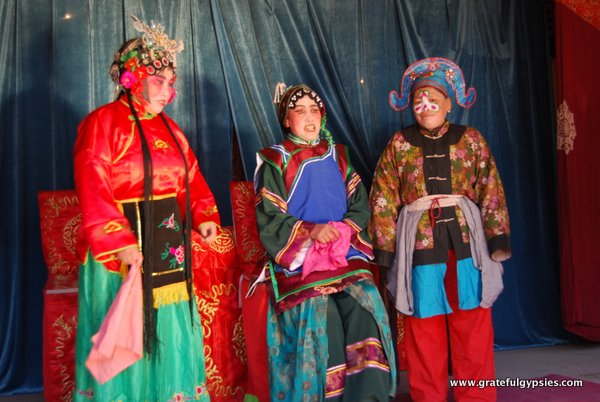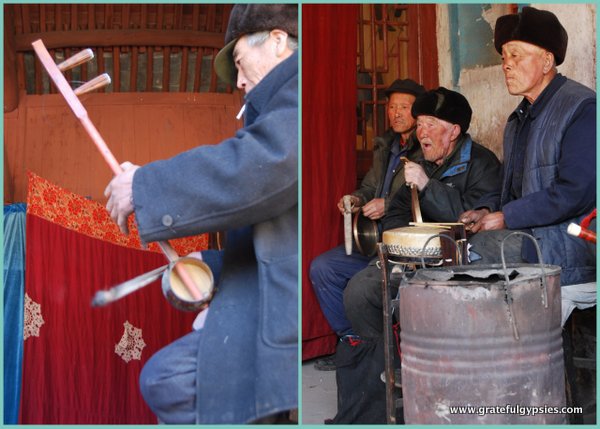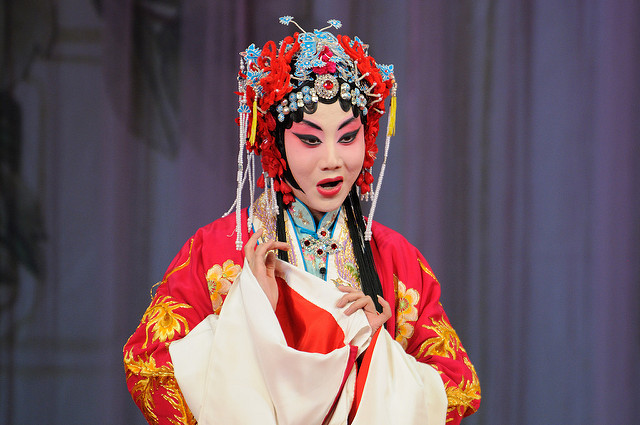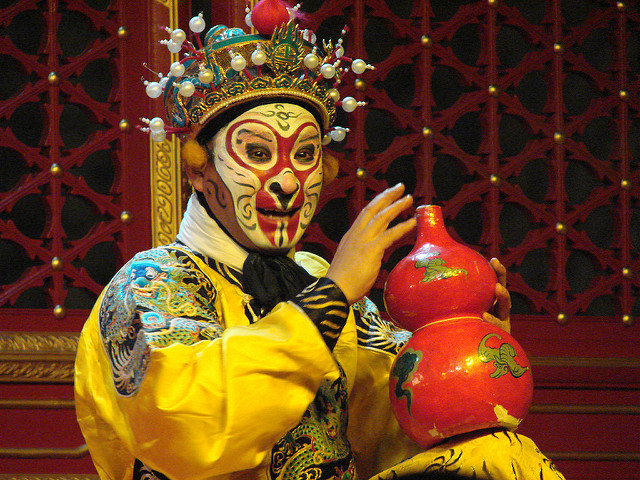Peking Opera Posted by sasha on Mar 23, 2017 in Culture
The Chinese capital is famous for lots of things – the Great Wall, roast duck, and of course, Peking opera (京剧 – jīng jù). It has a long history and is thought of as a cultural treasure of China. Performers wear elaborate and colorful costumes and face paint and put on an impressive show featuring singing, dialogue, dancing, acrobatics, and martial arts. Let’s take a closer look at this famous Chinese performance art, starting with a bit of history.
History
Back in 1790, the Emperor Qianlong was celebrating his 80th birthday. A few famous troupes of Anhui opera (徽剧 – huī jù) traveled to Beijing to perform. Several years later, other opera troupes from Hubei visited the capital and performed with the groups from Anhui. The blending of these two styles gradually led to the formation of a new style that came to be known as Peking opera. Unlike other traditional forms of Chinese opera, this new style simplified things with only a few voices and singing patterns. It caught on in popularity, especially after the Empress Dowager Cixi became a huge fan. After the establishment of the People’s Republic of China with the Communist victory, this art form was derided as being “feudalistic.” It was replaced by revolutionary model operas to serve as propaganda. For a variety of reasons, Peking opera has declined in popularity in recent decades. Reforms have been undertaken to try and attract audiences. While it may never return to its glory days, Peking opera remains an important aspect of Chinese culture.
Peking Opera Basics
For a great introduction into Peking opera, check out this short video from China Matters:
Music and Song
The music of Peking opera can be divided into two styles – Xipi (西皮) and Erhuang (二黄). As a matter of fact, an early name for this new style of opera simply combined both of those names – Pihuang. Xipi is lively and is used to express an excited mood, while Erhuang is more gentle and expresses a subdued mood. Music is played by a small ensemble composed of traditional melodic and percussion instruments. Main instruments include the jinghu (京胡 – jīng hú), a 2-stringed instrument that is played with a bow. Another key instrument is the yueqin (月琴 – yuè qín), often called a “moon guitar.” Melodies include arias, fixed-tune melodies, and percussion patterns.
There are four different levels of song in Peking opera – songs with music, verse recitation, prose dialogue, and non-verbal vocalizations. The main techniques used when it comes to vocals are breath, pronunciation, and a special Peking opera style pronunciation. Lyrics in come in five or seven-character sentences, while some extra characters may be added for clarification. Rhyming is also important in Peking opera songs, as is the proper use of tones.
Roles
There are four main characters in Peking opera:
-
Sheng (生 – shēng): the main male role
-
Dan (旦 – dàn): female role
-
Jing (净 – jìng): painted face role
-
Chou (丑 – chǒu): the clown, or “ugly” role
In addition, each of the main roles can be further divided into sub-types. For example, Laosheng (老生 – lǎo shēng) is a dignified older character while Daomadan (刀马旦 – dāo mǎ dàn) is a young female warrior. Each type of character has its own performance conventions.
Make-up and Costumes
Another very important aspect of Peking opera are the make-up and costumes worn by the performers. These can symbolize the personality, characteristics, and fate of the various roles. Face painting is a big part of Peking opera make-up, as the main color used symbolizes the character:
-
red = prosperity, intelligence, bravery
-
purple = justice, sophistication
-
blue = fierceness, pride
-
black = rough, forthright
-
green = violence
-
yellow = cruelty
-
white = evil, treachery
Costumes are incredibly elaborate and beautiful, and can take months or even years to design.
Where to See Peking Opera
If you’re planning a trip to Beijing, you should definitely make it a point to catch a performance of this traditional Chinese art. There are quite a few venues where you can see Peking opera, including:
- Huguang Hall (湖广会馆 – hú guǎng huì guǎn)
- Liyuan Theater (梨园剧场 – lí yuán jù chǎng)
- Chang’an Grand Theater (长安大戏院 – cháng’ān dà xì yuàn)
- Peking Opera Theater (京剧院实验剧场 – jīng jù yuàn shí yàn jù chǎng)
- NCPA (国家大剧院 – guó jiā dà jù yuàn)
You can catch a performance any night of the week – just do your research before arriving.
For more on Peking opera, check out this documentary from CCTV:
Have you ever seen Peking opera? What did you think of it? Let us know in the comments below!

Build vocabulary, practice pronunciation, and more with Transparent Language Online. Available anytime, anywhere, on any device.








Comments:
Janet:
I have had the pleasure of enjoying Peiking Opera three times– twice in Peiking and once in New York City. It was a wonderful experience each time. The costuming was outstanding and the dramatic control unbelievable. I only wish I could do it again.